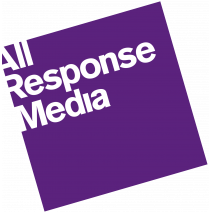One thing you can rely on time and time again, is that sales houses will say they have to put their prices up in the next year. The argument is always the same, fewer people are watching TV and there are more advertisers on air.
Now, just to help dispel the claims, in The Netherlands the number of individuals reached in January 2018 was down just 1% year-on-year (YoY), average viewing time was down 4%, but these are small numbers compared to the 10-15% price hikes that stations were applying and the number of advertisers on air was flat YoY.
This isn’t the case for all sales houses, and in fact, it is the most expensive of the top four that has seen a big drop: RTL network saw a 7% drop YoY in average reach and a 29% drop in average viewing time. Their advertisers also dropped by 2%. Is simply putting up pricing a sustainable way to drive advertising revenue, or do the big sales houses need to embrace a world where measurability is key and terms like ‘reach and frequency’ no longer hold as much importance as return on investment (ROI)?
In a move that stunned the market, Ster (the public broadcaster) announced that they were binning annual agreements and offering the same conditions to every advertiser. There is one base rate, and you then apply an index based on what you want; if you don’t care where your airtime is delivered you get 50% off, if you want peak it is 30% off etc. This meant that advertisers no longer have to commit to big annual amounts to get a good price, and the traditional brand advertisers cannot monopolise airtime with big annual deals.
The big question is, has their strategy worked? In January, NPO saw a YoY increase of 10% in advertisers and an 8% growth in new advertisers. They did, however, see some of the larger advertisers come off the air in protest, for example, supermarket giant Albert Heijn… although they were back on in February and March. Group M initially suggested that NPO could lose €60m in 2018, however, initial reports for January suggest that turnover was equal YoY. Of course, it is no surprise that the network agencies kicked up a fuss, and will to try to spend elsewhere this year as the change at NPO also means no more agency volume bonuses (AVBs), as is testament by the fact that in the first week of the year Ster represent a 40% share in gross rating points (GRPs) amongst independent agencies vs Group M who had less than half this share. It will be very interesting to see if this trend continues over the year.
All Response Media viewpoint
The changes at NPO were well received at the All Response Media Amsterdam headquarters. More flexibility, no annual contracts and lower pricing all bode well for our clients, and we certainly took advantage of it. Our Ster GRP share in 2017 was 35% and in 2018 we increased it to 53%; the average cost per GRP was down 15% YoY. We decreased our RTL share from 15% to 10%, and on average when comparing the main station from NPO to RTL we saw a cost per view (CPV) 30% lower on NPO.
By refusing to embrace change, invest in programming and re-think pricing strategies, sales houses continue to play into the hands of the Goliaths, and we all know how that ends.

